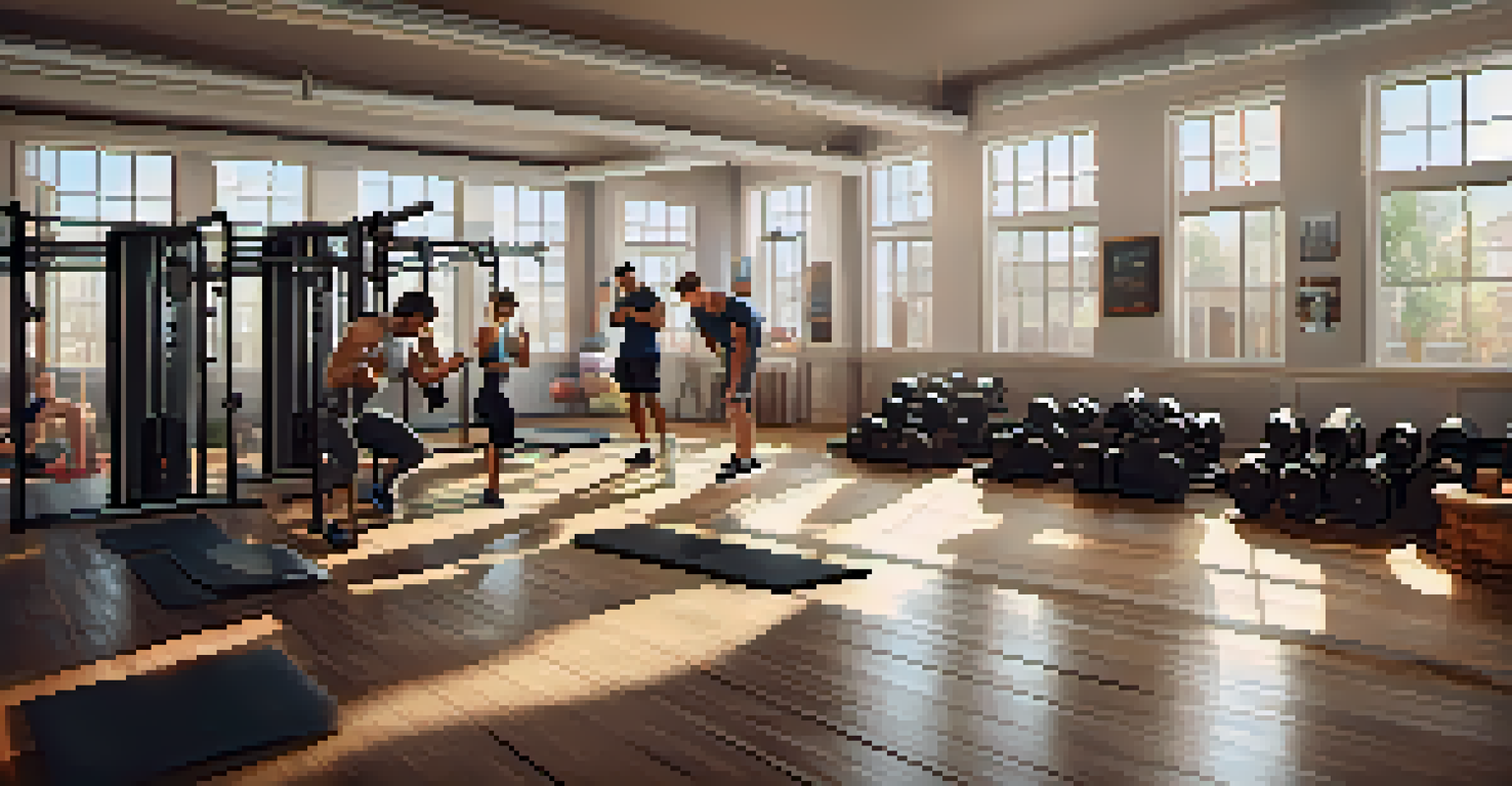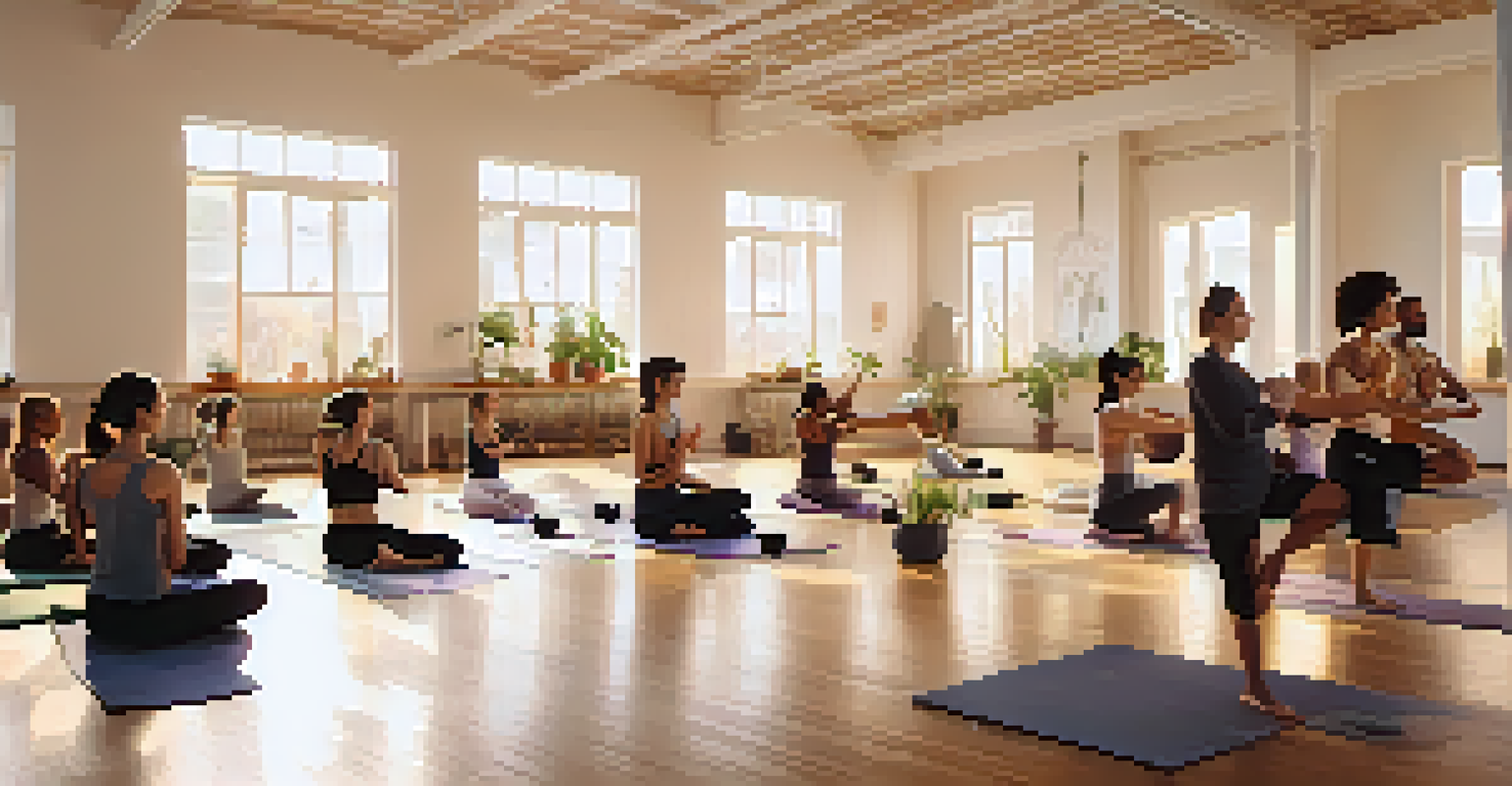Fitness and Self Defense: Integrating Training for Better Skills

Understanding the Connection Between Fitness and Self-Defense
Fitness and self-defense might seem like two separate pursuits, but they are deeply interconnected. Physical fitness lays the foundation for effective self-defense, as strength, endurance, and agility are crucial in a real-life confrontation. Just as you wouldn’t drive a car without fuel, you can’t expect to excel in self-defense techniques without a solid fitness regime.
The best way to predict the future is to create it.
Imagine trying to run from a threat while feeling winded after a short sprint—this is where fitness comes into play. The better shape you’re in, the more capable you’ll be in high-pressure situations. Moreover, being fit can boost your confidence, giving you the mental edge you need to face any confrontation.
Ultimately, blending these two disciplines will enhance both your physical capabilities and your self-defense skills. By understanding how they complement each other, you can create a more effective training regimen that prepares you for anything life throws your way.
Key Fitness Components Essential for Self-Defense
When considering fitness for self-defense, it’s important to highlight key components: strength, endurance, flexibility, and coordination. Strength allows you to overpower an assailant or break free from a hold, while endurance ensures you can sustain your energy during a prolonged encounter. Flexibility helps in executing various self-defense moves, and coordination ties everything together for fluid movement.

Think of these components as the building blocks of your self-defense arsenal. Just like a house needs a strong foundation to stand tall, your self-defense skills need a robust physical framework to be effective. For instance, practicing yoga can improve flexibility, while circuit training can boost strength and endurance simultaneously.
Fitness Enhances Self-Defense Skills
Physical fitness is essential for effective self-defense, providing the strength, endurance, and agility needed in confrontational situations.
By focusing on these key fitness components, you’ll not only become more proficient in self-defense techniques but also improve your overall health. This holistic approach will empower you to feel stronger, faster, and more agile, ready to handle any situation.
Incorporating Cardio for Enhanced Self-Defense Skills
Cardiovascular fitness plays a pivotal role in self-defense training, as it enhances your stamina and reaction time. Engaging in activities like running, swimming, or cycling will help build the endurance needed to maintain focus and energy during a confrontation. The last thing you want is to tire out quickly when facing a potential threat.
It's not the will to win that matters—everyone has that. It's the will to prepare to win that matters.
Consider incorporating interval training into your routine, where you alternate between high-intensity bursts and lower-intensity recovery periods. This mirrors the unpredictable nature of a self-defense situation, where you may need to sprint away or quickly dodge an attack. By simulating these conditions during your workouts, you prepare your body for real-world scenarios.
Remember, the ultimate goal is not just physical fitness but also the ability to react and respond effectively in stressful situations. By prioritizing cardiovascular health, you’ll improve your self-defense capabilities, allowing you to think clearly and act decisively when it matters most.
Strength Training: Building Power for Self-Defense
Strength training is undeniably crucial for self-defense, as it equips you with the power needed to defend yourself effectively. Exercises such as weightlifting, bodyweight movements, and resistance training contribute to building muscle mass and enhancing overall strength. This, in turn, allows you to execute self-defense maneuvers with greater force.
Picture a scenario where you must push an attacker away or hold your ground against a stronger opponent. The strength you develop through targeted training can make all the difference in these situations. Additionally, strength training helps prevent injuries by reinforcing your muscles, joints, and ligaments.
Key Fitness Components to Focus On
Strength, endurance, flexibility, and coordination are crucial components that form the foundation of effective self-defense training.
Incorporating compound exercises, like squats and deadlifts, can maximize your strength gains while providing functional benefits for self-defense. By focusing on your strength training, you’re not just preparing for physical confrontations but also boosting your confidence and resilience.
Developing Flexibility for Effective Self-Defense Techniques
Flexibility is often overlooked in self-defense training, yet it plays a vital role in your ability to maneuver and escape. Increased flexibility allows for a greater range of motion, which is essential when executing various self-defense techniques, such as kicks or evasive movements. The more flexible you are, the better equipped you’ll be to handle unexpected situations.
Incorporating stretching and mobility exercises into your routine can significantly enhance your flexibility over time. Activities like yoga or Pilates not only improve your flexibility but also promote body awareness and control, which are indispensable in self-defense scenarios. Imagine being able to swiftly dodge an attack or escape a hold simply because your body can move more freely.
Ultimately, flexibility training helps to round out your fitness regimen, ensuring you’re not just strong but also agile. By committing to flexibility exercises, you’ll find yourself better prepared to respond to threats with grace and efficiency.
The Importance of Mental Preparedness in Self-Defense
Self-defense is as much a mental game as it is a physical one. Mental preparedness involves understanding your surroundings, assessing potential threats, and developing a mindset that prioritizes safety. Training your mind can be just as crucial as training your body; when faced with danger, a calm and focused mind can be your greatest asset.
Consider situations where adrenaline might cloud your judgment. Having a strategy in place can help you stay composed and think clearly when it matters most. Techniques such as visualization and mindfulness can enhance your mental readiness, allowing you to envision potential scenarios and how you would respond.
Mental Preparedness is Vital
Being mentally prepared is just as important as physical fitness, as it equips you to assess threats and respond effectively under pressure.
By integrating mental preparedness into your fitness and self-defense training, you’ll cultivate a balanced approach to personal safety. Remember, being physically fit is important, but being mentally prepared can give you the edge you need to navigate uncertain situations with confidence.
Creating a Balanced Training Regimen for Optimal Results
To truly benefit from integrating fitness and self-defense, it’s essential to create a balanced training regimen that incorporates all the elements we’ve discussed. This includes cardiovascular workouts, strength training, flexibility exercises, and mental preparation strategies. By blending these components, you’ll develop a well-rounded skill set that prepares you for various self-defense scenarios.
It’s helpful to establish a weekly routine that alternates focus areas, allowing you to give each aspect the attention it deserves. For example, you might dedicate certain days to cardio and strength training, while others focus on flexibility and mental strategies. This approach not only prevents burnout but also keeps your training sessions fresh and engaging.

Ultimately, a balanced training regimen empowers you to become a more capable and confident individual, both physically and mentally. By committing to this holistic approach, you’ll enhance your self-defense skills while improving your overall fitness and well-being.